漫画:用 Bitmap 与 AST 做一个配置化时长系统
“本文通过编故事的方式讲解bitmap&AST的一个应用场景。这个故事发生在一个网络游戏公司里面,主要登场人物
左边:导师,名字不重要
右边:实习生,三多
三多在一家游戏公司做实习生,一天下午他正在划水,被导师叫了过去:
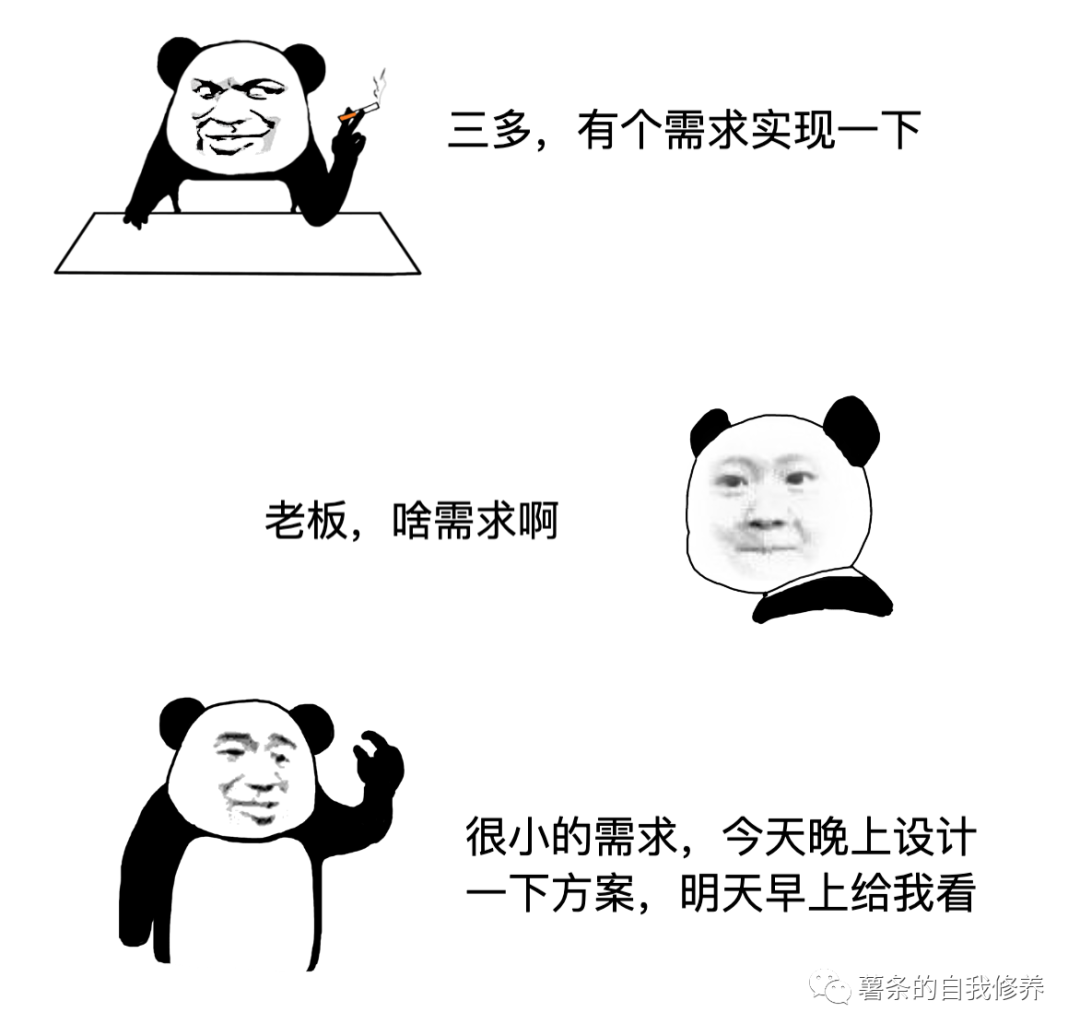
三多心里骂娘,但是一想到自己下个月又得交房租了,还是满含泪水打开了需求文档,需求文档大概的意思如下:

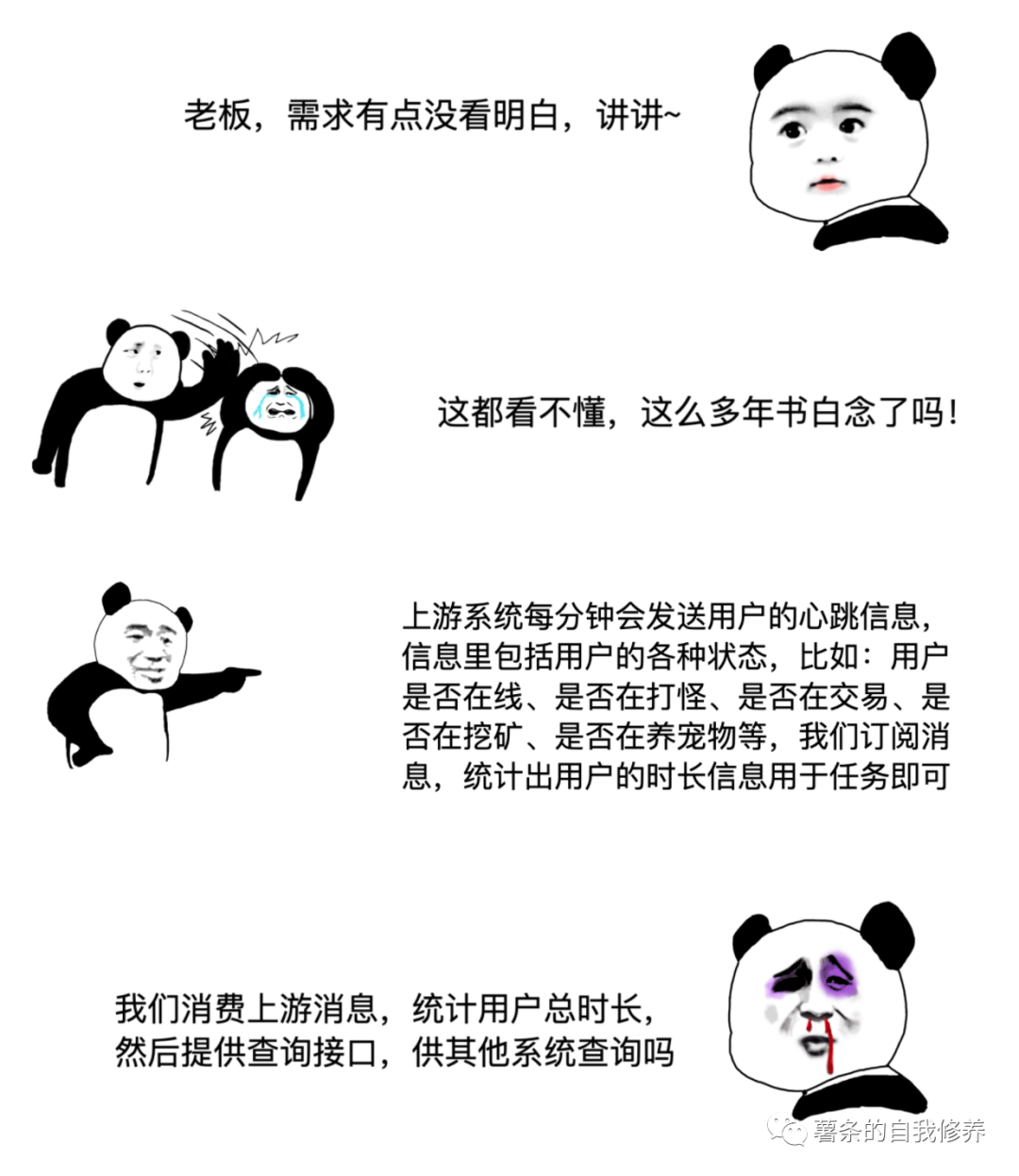

三多开始一边薅头发,一边设计系统,干到晚上12点,搞出了第一版系统架构图:
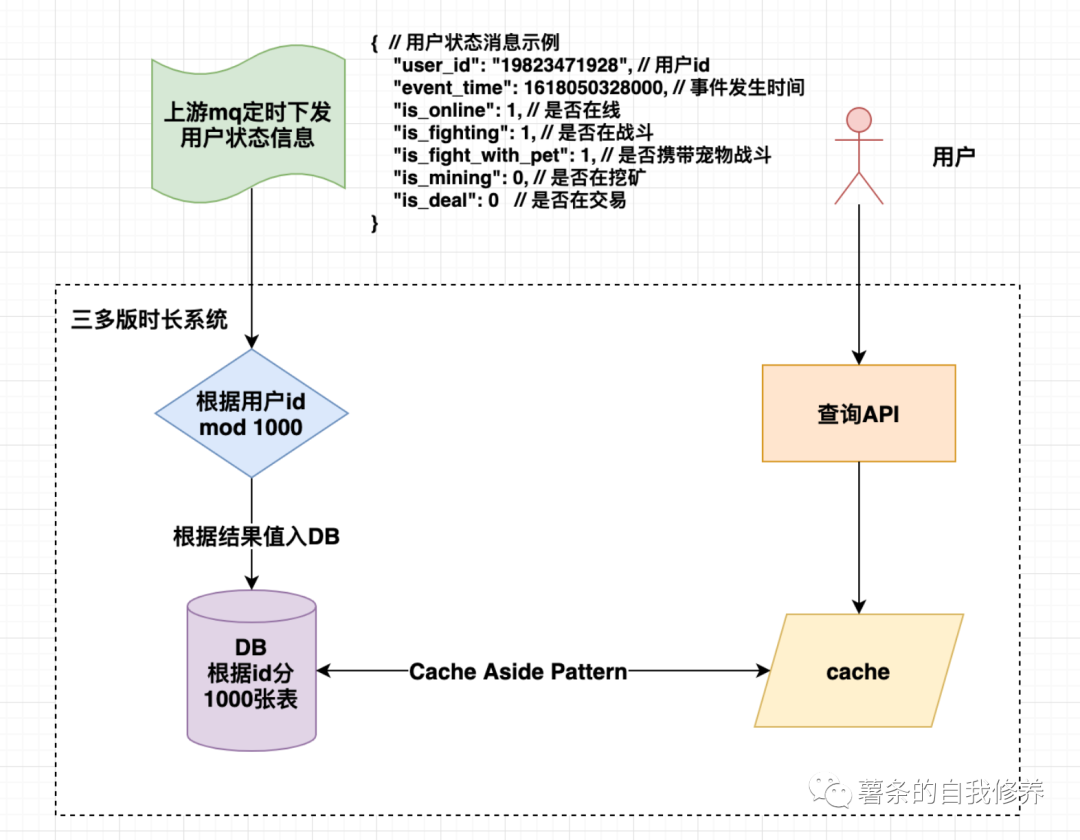
其中DB表的schema为:
| 字段名 | 类型 | 含义 |
|---|---|---|
| id | bigint | 自增主键 |
| user_id | bigint | 用户id |
| stat_date | date | 统计日期 |
| online_duration | int | 用户在线时长总计 |
| fight_duration | int | 用户打怪时长总计 |
| pet_duration | int | 携带宠物时长总计 |
| deal_duration | int | 交易时长总计 |
| mining_duration | int | 挖矿时长总计 |
| fight_hour_0 | int | 0-1点打怪时长总计 |
| fight_hour_1 | int | 1-2点打怪时长总计 |
| ... | ||
| fight_hour_23 | int | 23-24点打怪时长总计 |
| pet_hour_0 | int | 0-1点养宠物时长总计 |
| pet_hour_1 | int | 1-2点养宠物时长总计 |
| ... | ||
| pet_hour_23 | Int | 23-24点1-2点养宠物时长总计 |
| ... | 其他时长信息类似,忽略 |

于是三多第二天给导师看设计:
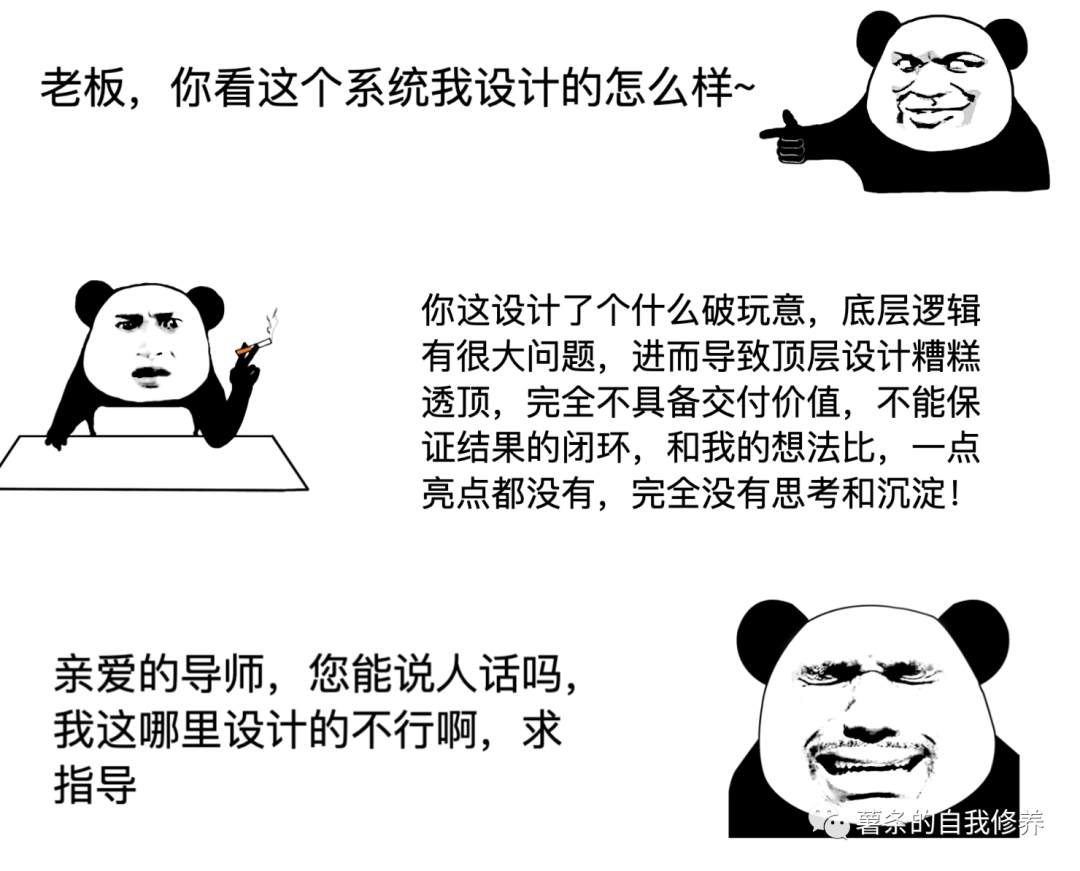
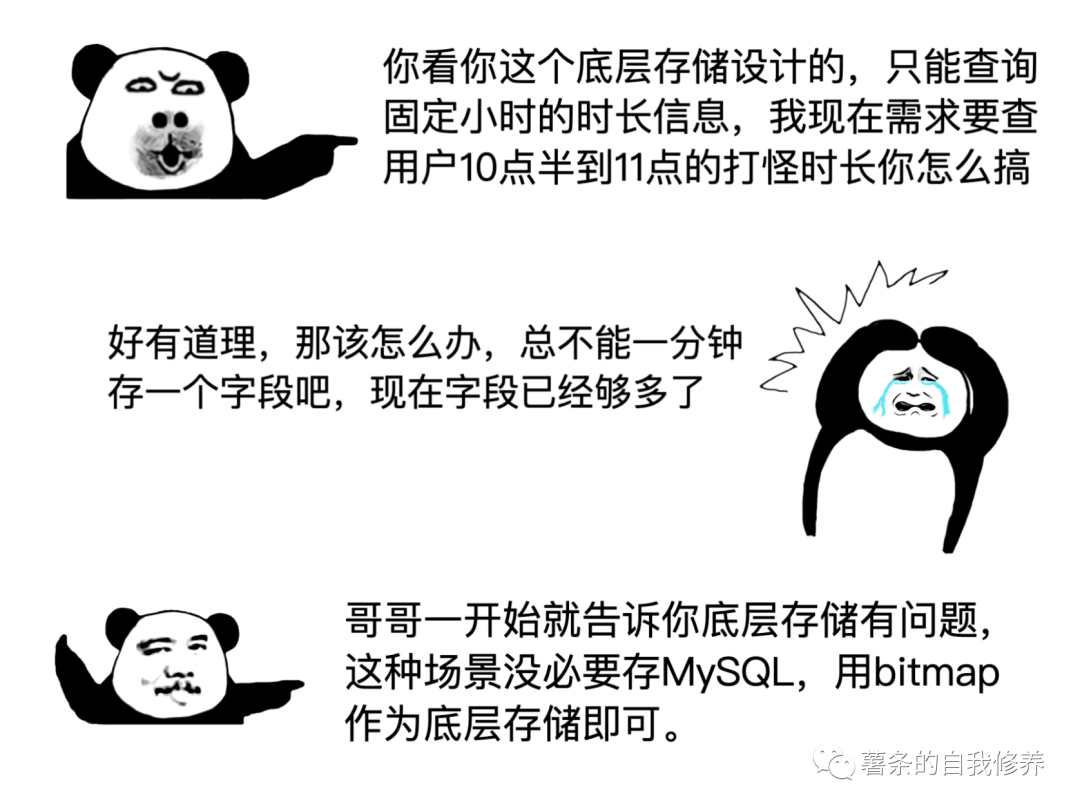


于是三多重新设计了技术方案:
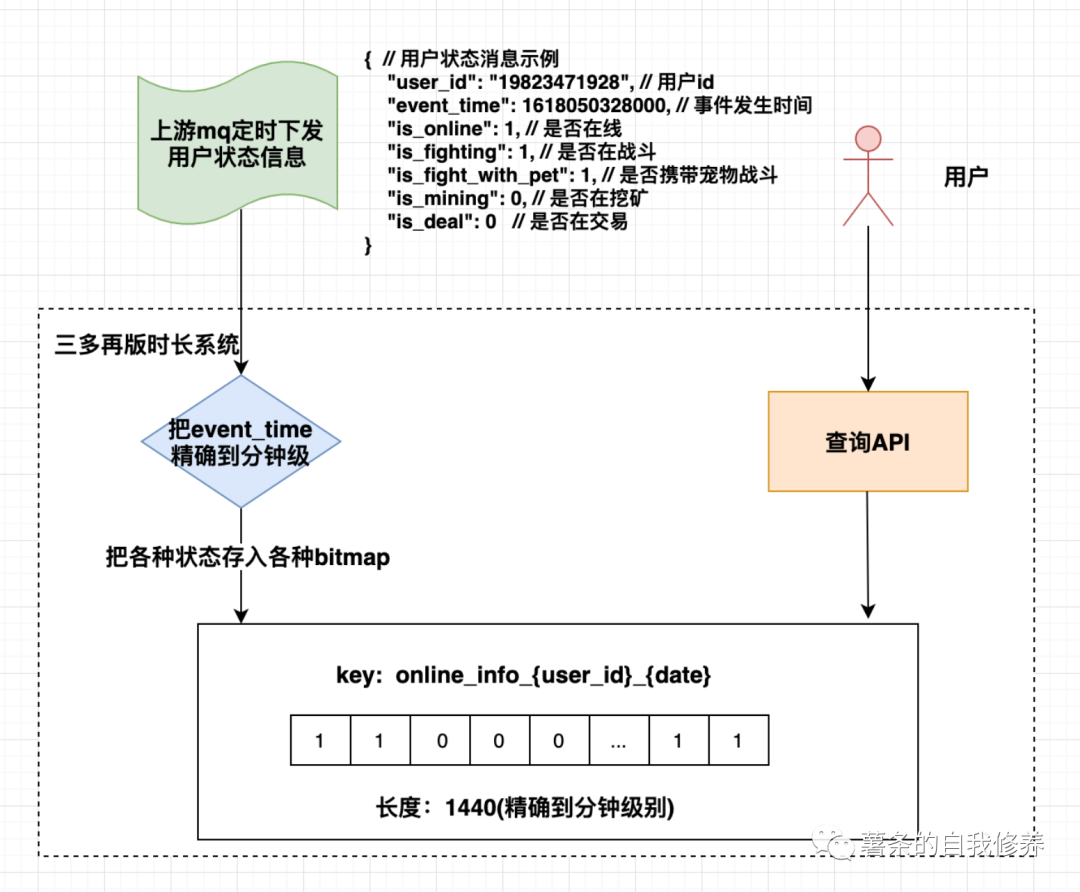
三多把技术方案设计好后,就开始写代码,然后项目上线,一切顺利,直到几天后...

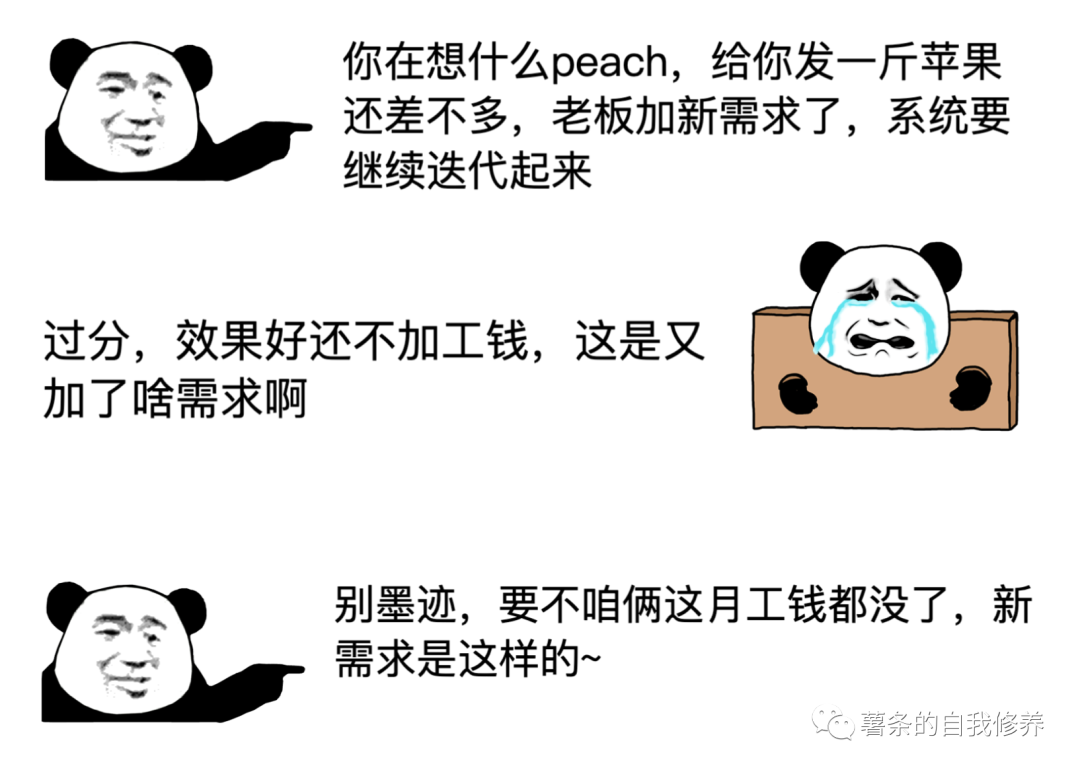
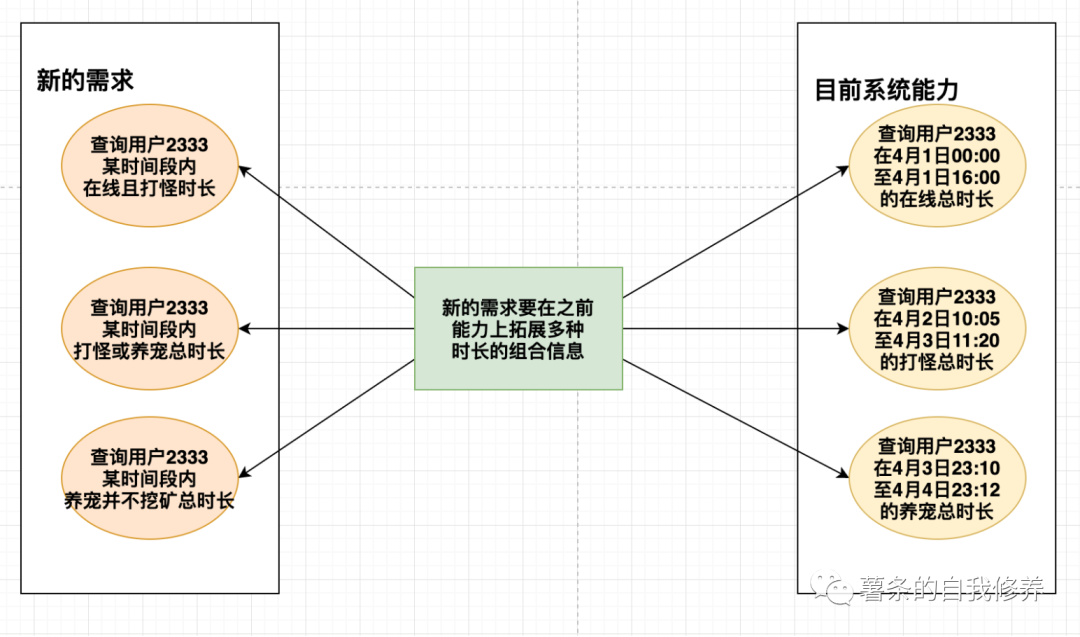

三多导师随便抄起家伙画了个图然后丢给三多让他去实现:
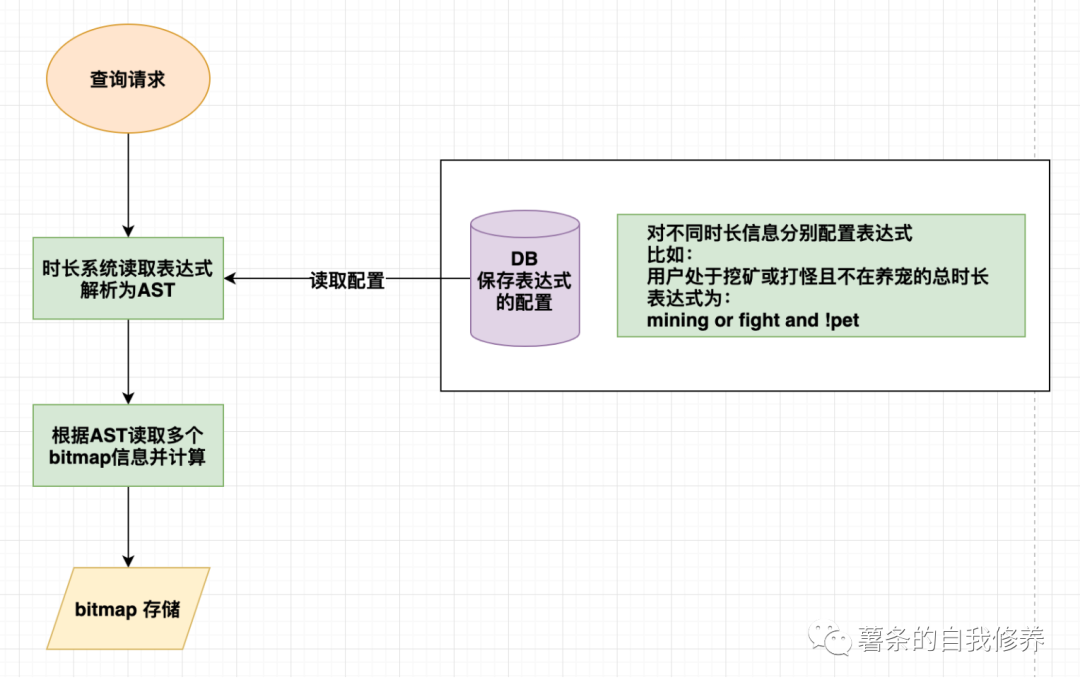
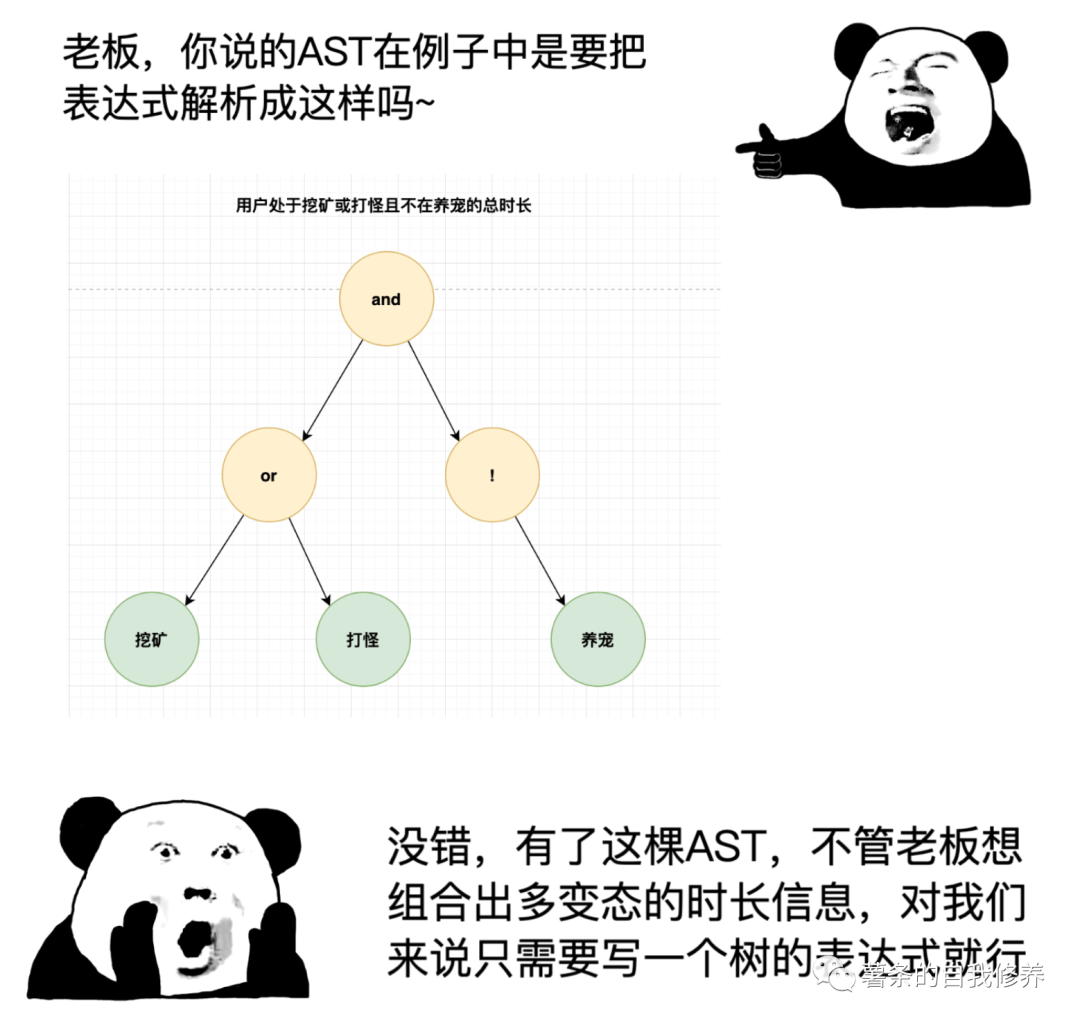

于是三多实现了这套时长系统,由于系统能力非常灵活,老板让PM配置了一些非常复杂的时长表达式,被玩家们赐予了亲切的称号:耍猴公司~
下面这段代码是个AST的最小demo,有兴趣的读者可以看看:
package main
import (
"fmt"
"reflect"
"strconv"
"strings"
)
const (
Number = 0
Operator = 1
)
type Node struct {
Type int
Value string
Left *Node
Right *Node
}
// input: 1 + 4 - 2
// result:
// -
// / \
// + 2
// / \
// 1 4
func getAst(expr string) *Node {
operator := make(map[string]int)
operator["+"] = Operator
operator["-"] = Operator
nodeList := make([]Node, 0)
var root *Node
expr = strings.Trim(expr, " ")
words := strings.Split(expr, " ")
for _, word := range words {
var node Node
if _, ok := operator[word]; ok {
node.Type = Operator
} else {
node.Type = Number
}
node.Value = word
nodeList = append(nodeList, node)
}
for i := 0; i < len(nodeList); i++ {
if root == nil {
root = &nodeList[i]
continue
}
switch nodeList[i].Type {
case Operator:
nodeList[i].Left = root
root = &nodeList[i]
case Number:
root.Right = &nodeList[i]
}
}
return root
}
func getResult(node *Node) string {
switch node.Type {
case Number:
return node.Value
case Operator:
return calc(getResult(node.Left), getResult(node.Right), node.Value)
}
return ""
}
func calc(left, right string, operator string) string {
leftVal, _ := TransToInt(left)
rightVal, _ := TransToInt(right)
val := 0
switch operator {
case "+":
val = leftVal + rightVal
case "-":
val = leftVal - rightVal
}
return TransToString(val)
}
func main() {
expr := `1 + 4 - 2 + 100 - 20 + 12 `
//expr := ` 1 + 4 `
ast := getAst(expr)
result := getResult(ast)
fmt.Println(result)
}
func TransToString(data interface{}) (res string) {
val := reflect.ValueOf(data)
return strconv.FormatInt(val.Int(), 10)
}
func TransToInt(data interface{}) (res int, err error) {
return strconv.Atoi(strings.TrimSpace(data.(string)))
}
推荐阅读
评论
